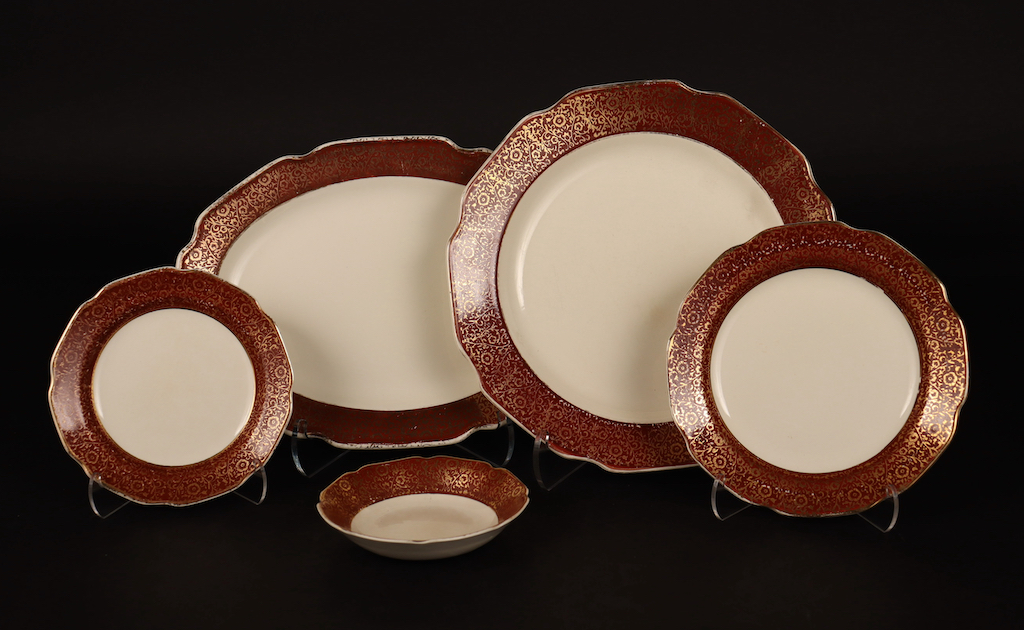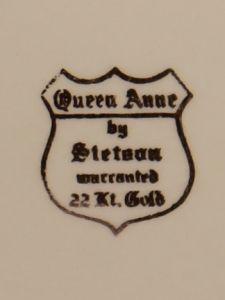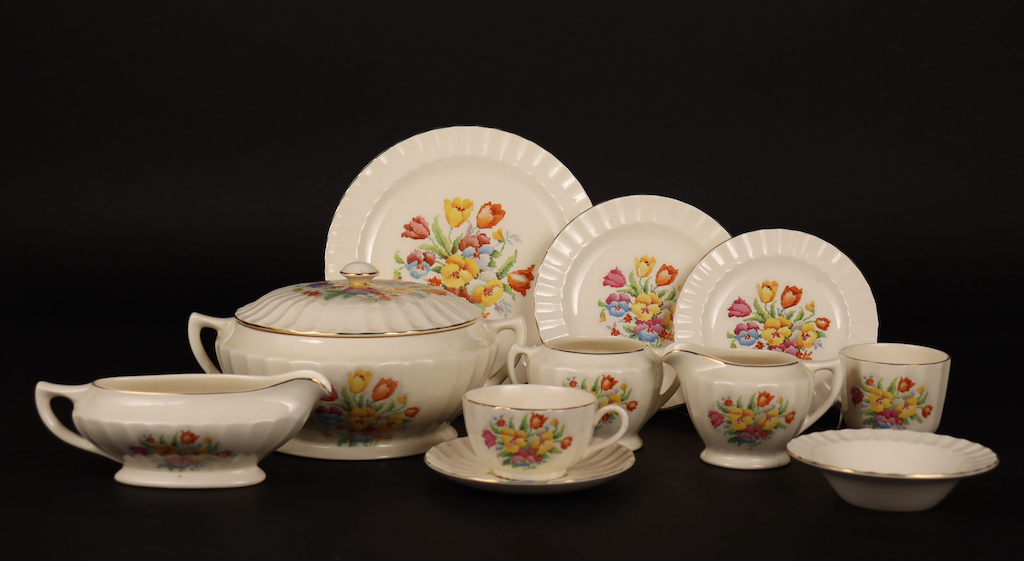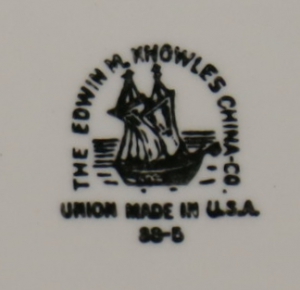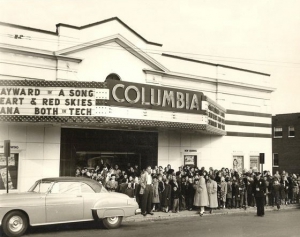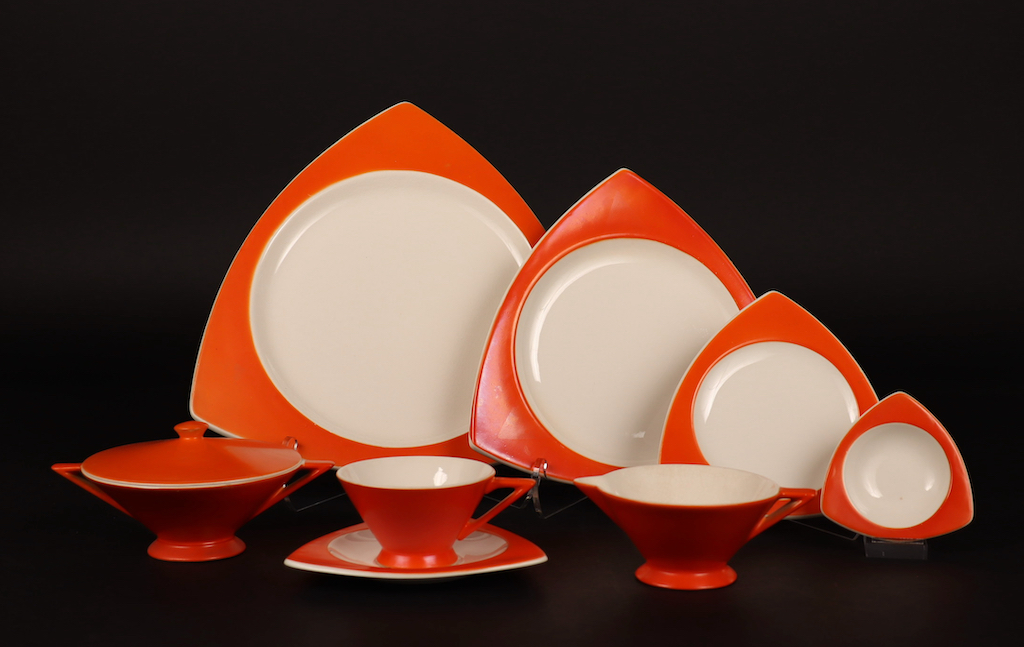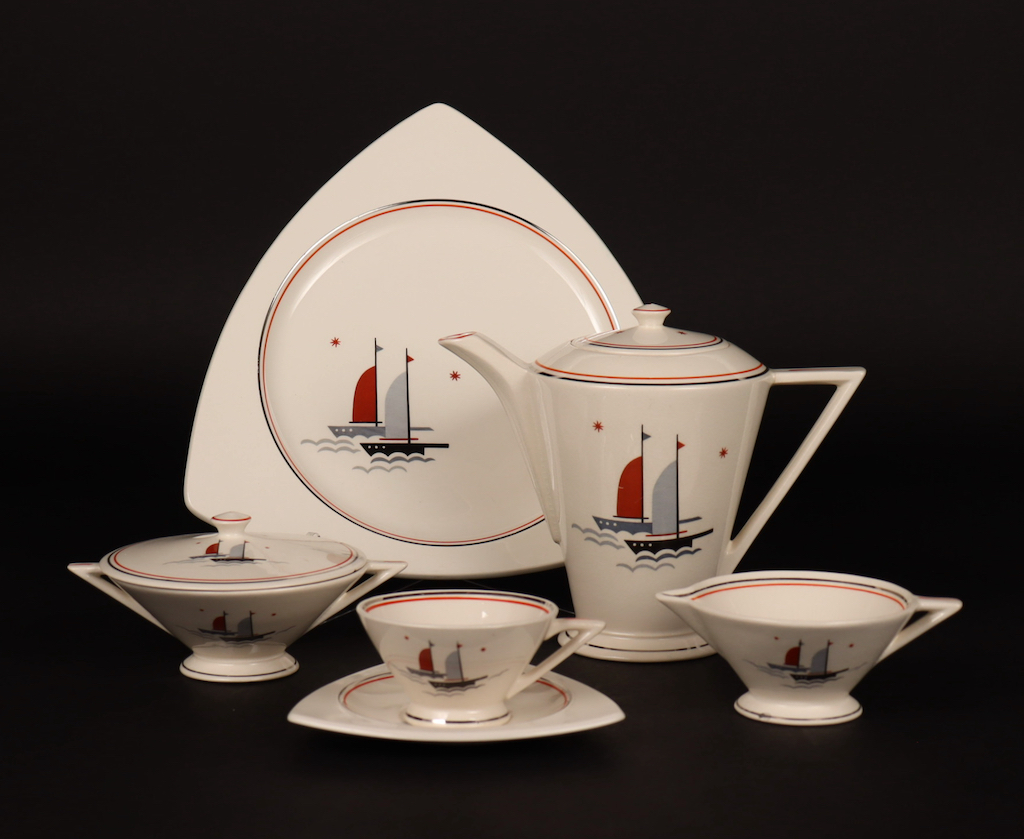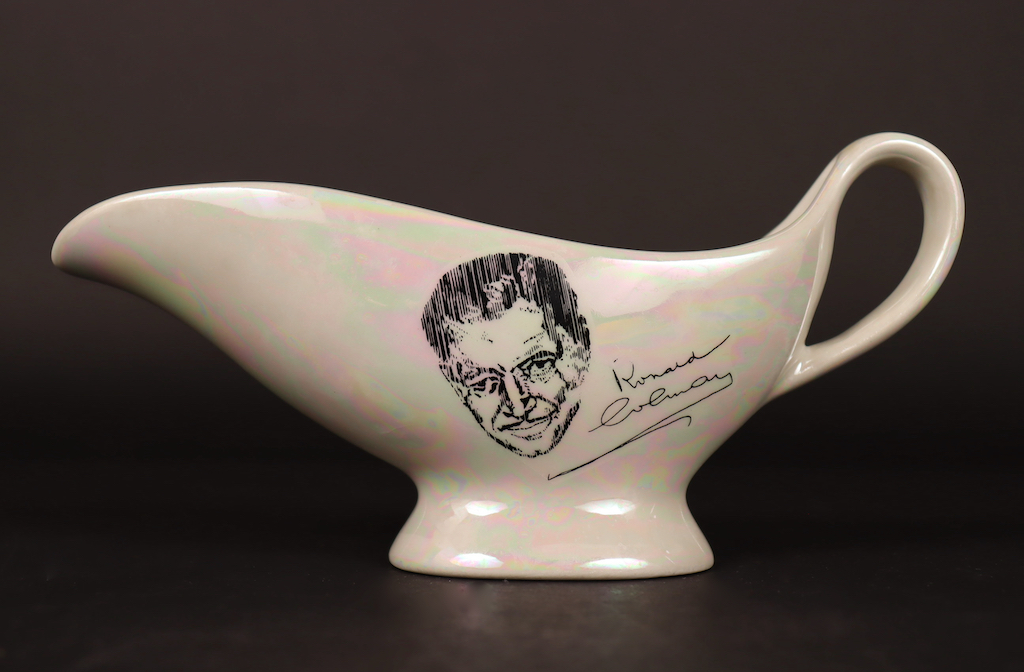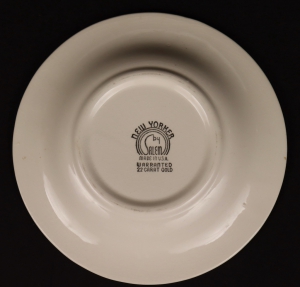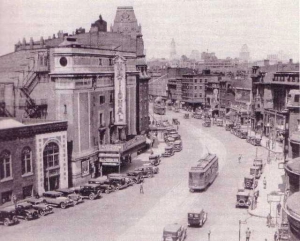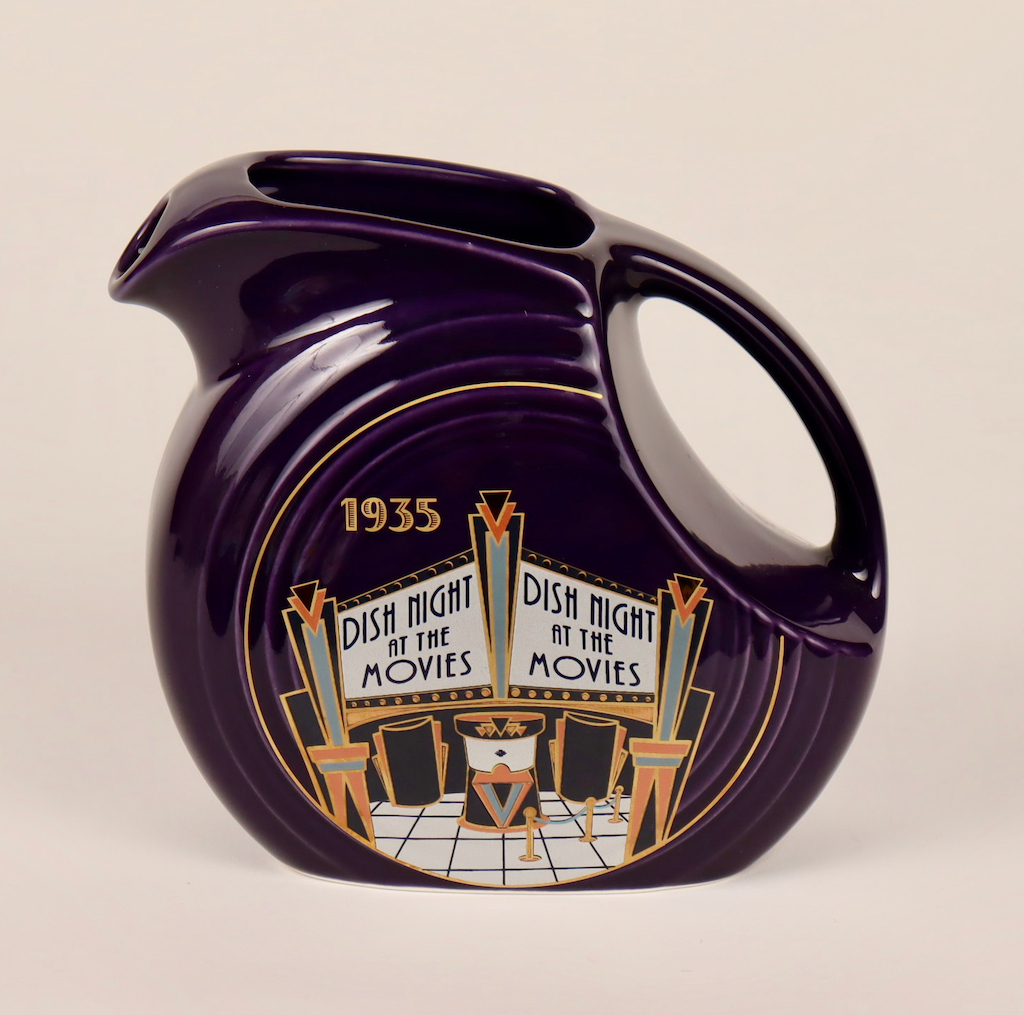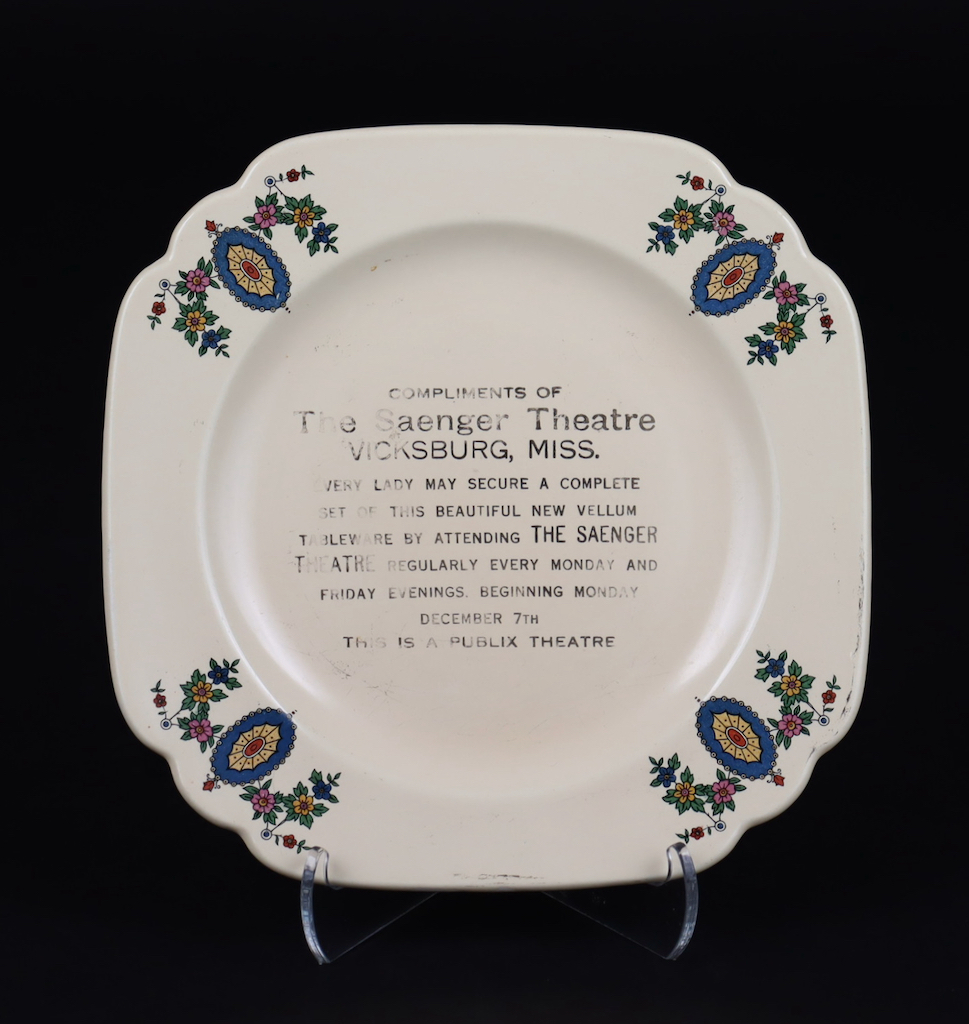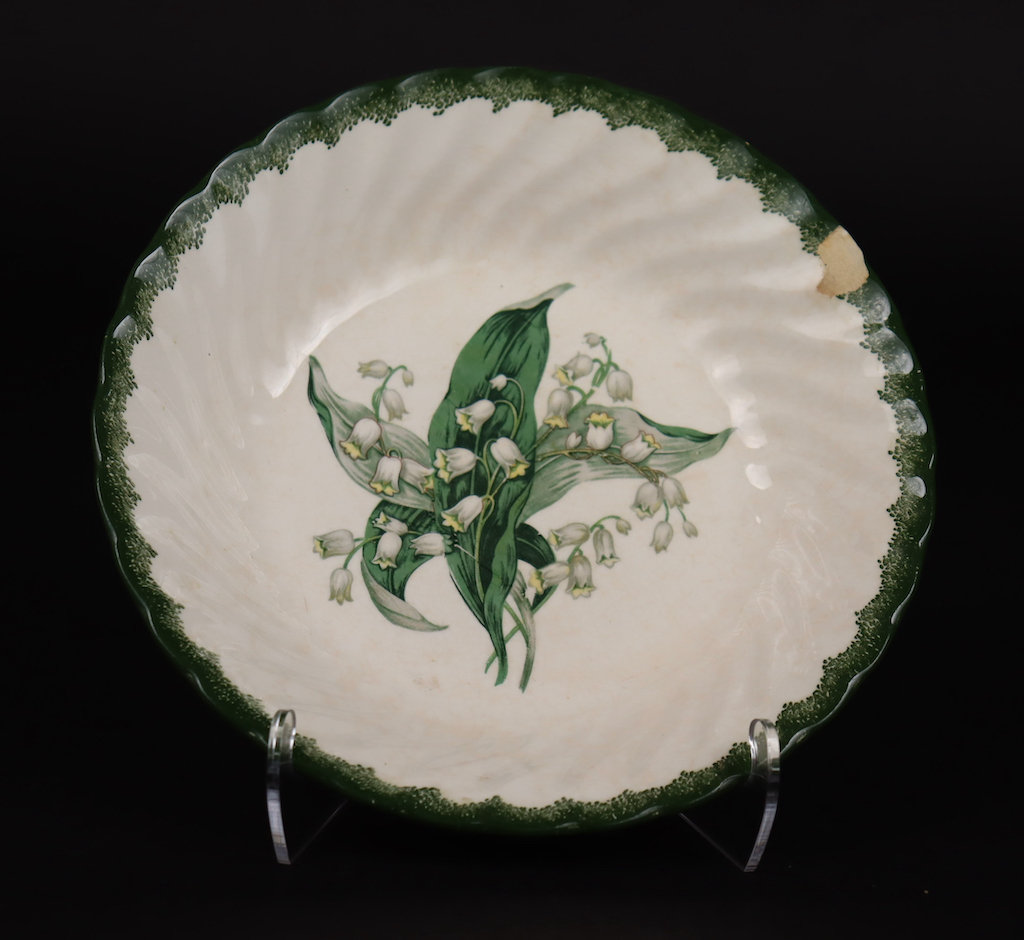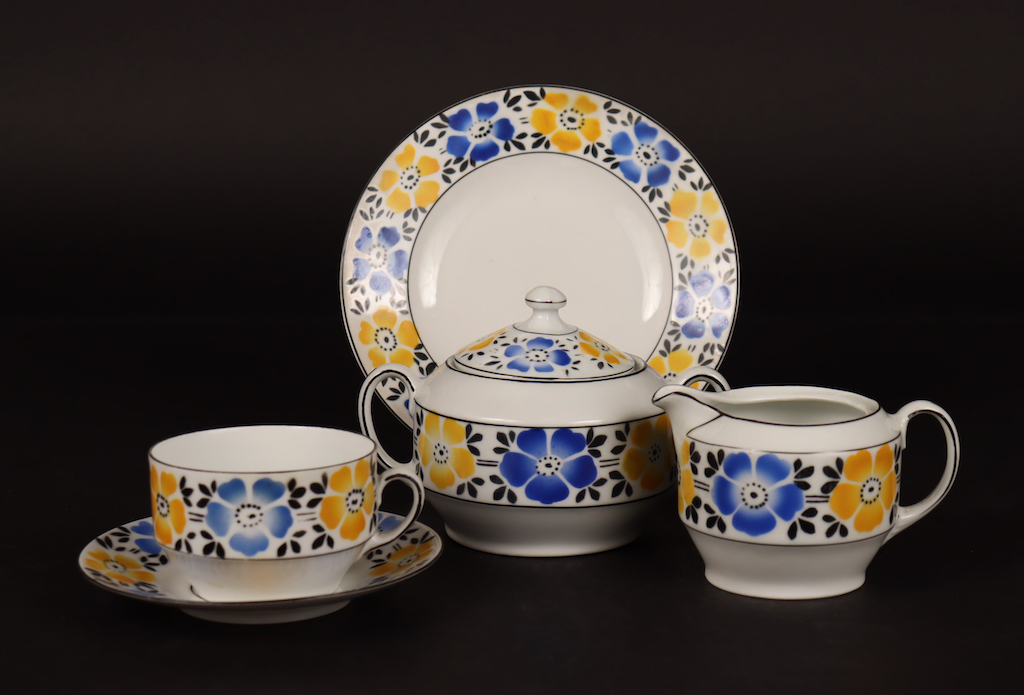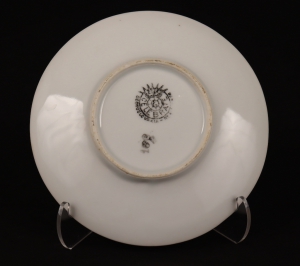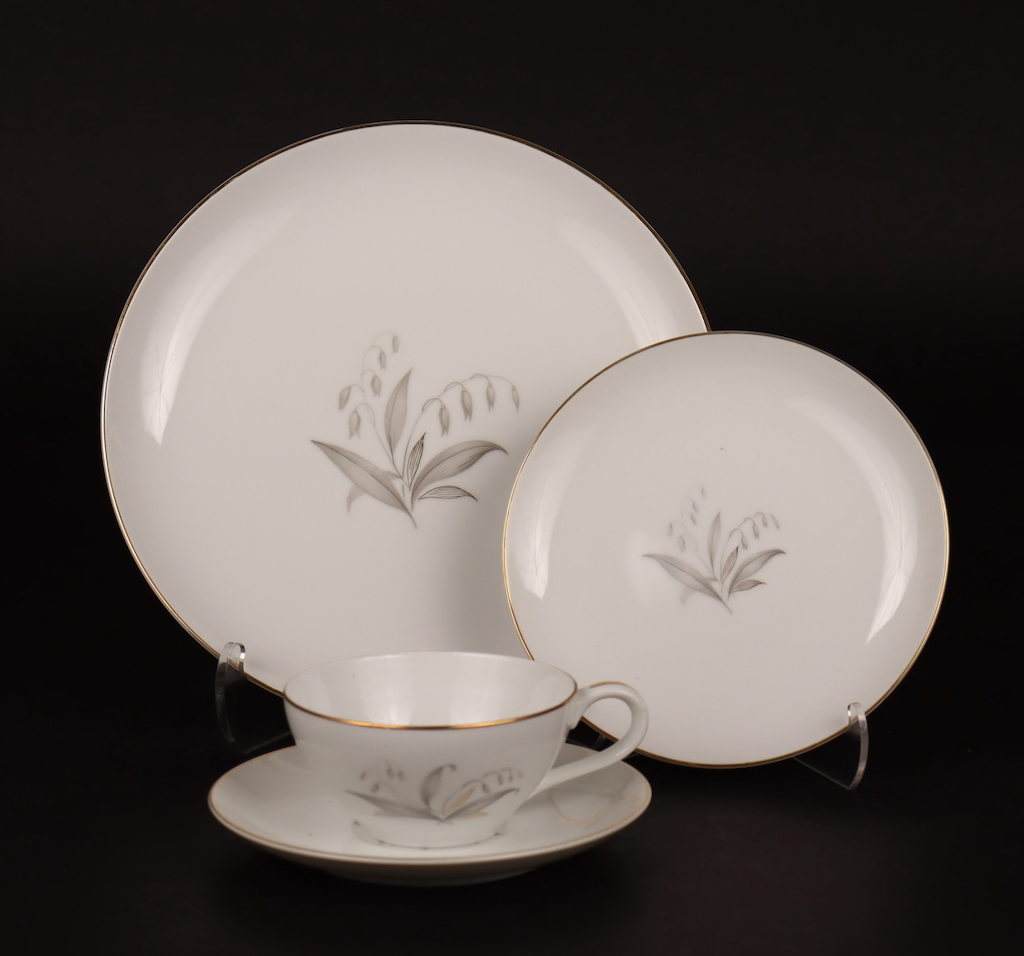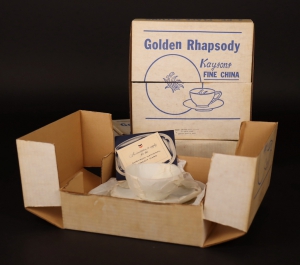Dish Night
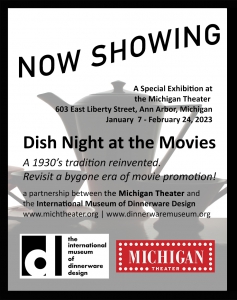 |
 |
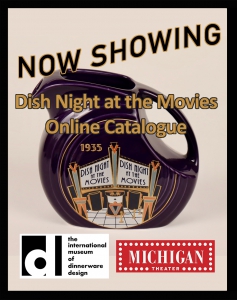 |
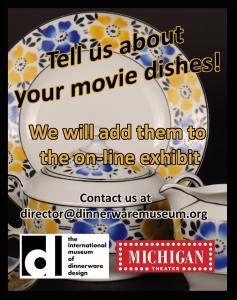 |
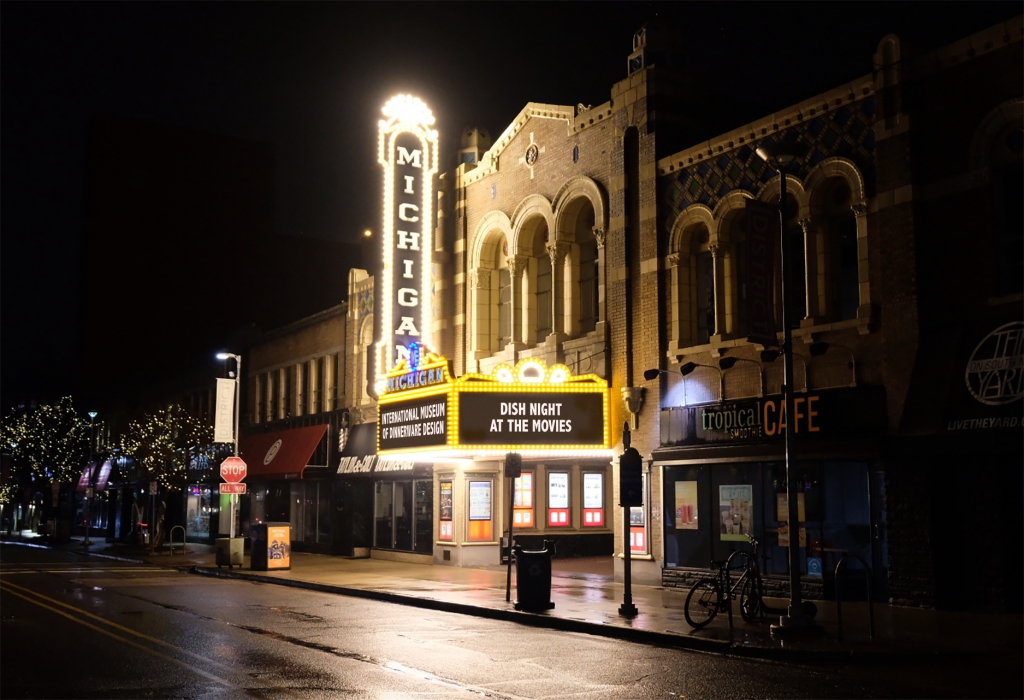
Dish Night at the Movies
A special exhibition at the Michigan Theater
603 East Liberty Street, Ann Arbor, Michigan
January 5 – February 24, 2023
and on-line
A partnership between the International Museum of Dinnerware Design and the Michigan Theater
How “Dish Night at the Movies” Giveaways Saved Hollywood in the Great Depression
Kathy Fuller-Seeley
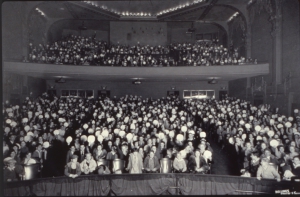 We look fondly back on Dish Night as a quintessential Depression-era movie theater event. The giveaway promotions of inexpensive dinnerware were one of the most successful solutions that small town and neighborhood movie theater managers found to bring movie patrons back to empty theaters during the hard times of the Great Depression. The “one free to each lady” china and glassware campaigns filled movie theaters of the 1930s with as much drama, elation, desire, disappointment and anguish and anything that was shown on their silver screens.
We look fondly back on Dish Night as a quintessential Depression-era movie theater event. The giveaway promotions of inexpensive dinnerware were one of the most successful solutions that small town and neighborhood movie theater managers found to bring movie patrons back to empty theaters during the hard times of the Great Depression. The “one free to each lady” china and glassware campaigns filled movie theaters of the 1930s with as much drama, elation, desire, disappointment and anguish and anything that was shown on their silver screens.
 The Great Depression, the worst economic downturn ever experienced in the US, began in October 1929 with the stock market crash. Conditions then continued to spiral downward to terrible lows in 1932 and 1933. With more than 25% of workers unemployed, cash-strapped families cut their purchasing to the bone, especially entertainment expenses. While baseball games and Broadway shows were out, folks tried to continue going to the movies. But when finally the bottom dropped out of American film box offices in 1933, desperate movie theater managers had to become innovative in their efforts to fill those empty seats. Double feature programs became the norm. However, movies and posters touting titillating barely- clad actresses and gangster heroes brought on censorship woes and conservative community pushback. Enter the humble, but irresistible, free dish.
The Great Depression, the worst economic downturn ever experienced in the US, began in October 1929 with the stock market crash. Conditions then continued to spiral downward to terrible lows in 1932 and 1933. With more than 25% of workers unemployed, cash-strapped families cut their purchasing to the bone, especially entertainment expenses. While baseball games and Broadway shows were out, folks tried to continue going to the movies. But when finally the bottom dropped out of American film box offices in 1933, desperate movie theater managers had to become innovative in their efforts to fill those empty seats. Double feature programs became the norm. However, movies and posters touting titillating barely- clad actresses and gangster heroes brought on censorship woes and conservative community pushback. Enter the humble, but irresistible, free dish.
The Salem China Company, of Salem Ohio, had, since the 1920s, promoted bulk dishware sales to furniture stores and banks to offer as free bonus gifts when a family purchased a dining room set or opened a savings account. Salem was among the quick-thinking potteries and distribution companies that now sought to spread the appeal of “something for nothing” to struggling movie theater managers.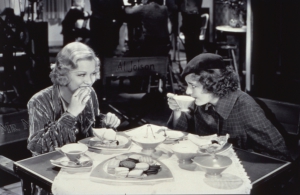
Giving away a free piece of dishware to every woman and girl in attendance at a movie show was far better than offering one lucky winner a cash reward from a number pulled from a hat. “Cash Night” promotions created many sore losers. Salem’s marketing literature to movie theater managers argued that shiny new dishware had universal appeal to women; in hard times, homemakers couldn’t afford new plates, but longed to set a lovely table or hold their heads up high at a church pot-luck supper.
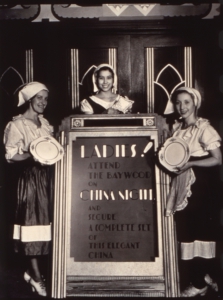 Dish Night meant guaranteed extra income at the movie box office, too. Let’s imagine a theater with 500 seats which charged 30 cents admission. In the happy days before the Crash, the theater manager might have earned $150 per nightly show. He did not want to cut ticket prices, (discounted to just 20 or 15 cents, equaling a take of just $100 or $75) for fear that he’d be unable to ever raise prices again. Instead, he could start a “China Night” giveaway program on what had been the slowest night of the week; Tuesday or Wednesday or Thursday were prime candidates, when the theater was largely empty anyway and he would barely take in $50 or $75. Inexpensive dishware, purchased by the railroad car-full, cost perhaps five cents per piece. Successful Dish Night programs could attract 250 women, who usually brought their husbands or family along with them to the show. Our sample exhibitor invested $12.50 in dishes per show, and earned $150, on that formerly dismal night. He could add to his profits by renting a very inexpensive romantic melodrama “B” feature that night, to please his female patrons. The “China Night” program could continue for 52 weeks, engaging female patrons for an entire year to assemble their complete set of dishes, and providing movie theaters welcome continued attendance and profits.
Dish Night meant guaranteed extra income at the movie box office, too. Let’s imagine a theater with 500 seats which charged 30 cents admission. In the happy days before the Crash, the theater manager might have earned $150 per nightly show. He did not want to cut ticket prices, (discounted to just 20 or 15 cents, equaling a take of just $100 or $75) for fear that he’d be unable to ever raise prices again. Instead, he could start a “China Night” giveaway program on what had been the slowest night of the week; Tuesday or Wednesday or Thursday were prime candidates, when the theater was largely empty anyway and he would barely take in $50 or $75. Inexpensive dishware, purchased by the railroad car-full, cost perhaps five cents per piece. Successful Dish Night programs could attract 250 women, who usually brought their husbands or family along with them to the show. Our sample exhibitor invested $12.50 in dishes per show, and earned $150, on that formerly dismal night. He could add to his profits by renting a very inexpensive romantic melodrama “B” feature that night, to please his female patrons. The “China Night” program could continue for 52 weeks, engaging female patrons for an entire year to assemble their complete set of dishes, and providing movie theaters welcome continued attendance and profits.
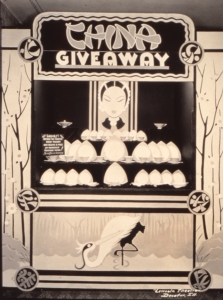 It’s a hilarious coincidence, in my opinion, that one of the dishware patterns that Salem promoted to movie theaters for “China Night” giveaways was the Tricorne pattern, designed by young Don Schreckengost when he interned at the Salem Company before heading off to college in 1934. The fashionable Art Deco shape of the triangular plates and cups, and their bright mandarin red color, must have seemed desirably attractive and “modern” to the women who planned to attend the movies each week to acquire a new piece of the set. For theater managers who feared that this pattern was “too” disconcertingly modern for their patrons, Salem was happy to supply the Tricorne shape with a variety of traditional decals featuring Dutch girls in petit point pattern, or 19th century French courtiers. I am always amused to find Tricorne pieces on eBay that attempt to combine the old fashioned with the new. I also laugh out loud when I find that collectors of Art Deco design place such high value on Tricorne dishware. I have seen collections offered for $1,000 for sale on eBay, when that inexpensive 52-piece dishware set was produced for perhaps $12.50, was given away for free, AND breaks after nearly 90 years when you look at it sideways.
It’s a hilarious coincidence, in my opinion, that one of the dishware patterns that Salem promoted to movie theaters for “China Night” giveaways was the Tricorne pattern, designed by young Don Schreckengost when he interned at the Salem Company before heading off to college in 1934. The fashionable Art Deco shape of the triangular plates and cups, and their bright mandarin red color, must have seemed desirably attractive and “modern” to the women who planned to attend the movies each week to acquire a new piece of the set. For theater managers who feared that this pattern was “too” disconcertingly modern for their patrons, Salem was happy to supply the Tricorne shape with a variety of traditional decals featuring Dutch girls in petit point pattern, or 19th century French courtiers. I am always amused to find Tricorne pieces on eBay that attempt to combine the old fashioned with the new. I also laugh out loud when I find that collectors of Art Deco design place such high value on Tricorne dishware. I have seen collections offered for $1,000 for sale on eBay, when that inexpensive 52-piece dishware set was produced for perhaps $12.50, was given away for free, AND breaks after nearly 90 years when you look at it sideways.
There is no easy way to identify for certain if particular plates, glassware or kitchenware came from a “China Night” giveaway. Mostly we have to depend on family lore of how great-grandma acquired them. Only a few pieces were marked – those were often bread plates that promoted the start of a dishware promotional program at a certain theater (these tend to be Homer Laughlin pieces). Giveaway dishware was produced by numerous potteries in a wide variety of patterns. They were very inexpensively-produced items. Salem offered theater clients, at the extreme end of the thriftiness scale, a Tricorne coaster that cost only one cent each to purchase in bulk. Some fortunate women had plenty of fine china in their homes already, and relegated their Dish Night plates to the garden shed, but others were grateful to have something shiny, new and unchipped to use on their tables.
The colorful dishware giveaway programs became a part of our collective Depression-era memories. It was most famously celebrated in author Jean Shephard’s delightful story “Leopold Doppler and the Great Orpheum Theater Gravy Boat Riot,” which was dramatized all its glory and mayhem in the sequel to the classic film “A Christmas Story,” titled “A Summer Story.”
On-Line Catalogue
In the 1970s my first set of “good china” came from dish giveaways at the local HyVee grocery store in Iowa City. I collected twelve place settings over a period of time and purchased the serving pieces at a discount. It was Haviland porcelain with little blue flowers and a platinum rim. Yet when I established the International Museum of Dinnerware in 2012, I had never heard about “dish night at the movies,” where beginning in the 1930s women were encouraged to go to the movies where they would receive free dishes for the price of admission. You can read the essay by Kathy Fuller-Seeley to learn more about this fascinating phenomenon and participate in her presentation via Zoom, January 11th. The recording will be available at our website a week or so after the event.
During the following decade, several people told me about the dishes their mothers happily received when attending movies during the Depression era. People offered to donate place settings or whole sets of movie dishes. One had only a few chipped dishes remaining, as the dishes were frequently inexpensive earthenware tableware that were prone to chipping and broke easily. And these dishes were used and loved. The people that grew up with these dishes and then inherited them all had family stories of “dish night at the movies.” That is what this in-person and virtual exhibition is all about. You can see their movie dishes and read their stories available in our online catalogue (here). Our in-person exhibition is a partnership with the historic Michigan Theater in Ann Arbor. Visit the exhibition and enjoy a nostalgic movie experience at the same time. Make your own history.
We also invite you to participate. Please send us your images of the movie dishes that you have, that your mother or grandmother collected. Tell us your family story. Who collected the movie dishes, when and in what city. If you know the name of the theater she attended, even better. This is an on-going event, much like our previous Wedding China exhibition. [Link to Your Dish Night Stories.]
Our exhibition also includes some related dish stories. Two advertising dishes, an Art Deco shaped plate and an ashtray, have their own stories included in the text on each item. Both are marketing dish night at the movies, naming specific theatres in specific towns, where these dish giveaways were occurring. One is from the National Theatre in Boston and the other is from the Saenger Theatre in Vicksburg, Mississippi. Both are now part of the IMoDD permanent collection.
Another piece included in this exhibition was a movie prop for a rather “B” movie from the 1990s, My Summer Story. The restaurant ware quality gravy boats have the image of actor Ronald Colman. This piece is loaned by film historian Kathy Fuller-Seeley. You can visit it in person at the Michigan Theater January 7 – February 24, 2023. The movie is available for free on-line. Here is a short video clip from the movie, where the women movie goers, exasperated by received Ronald Colman gravy boats for several weeks in a row, begin tossing them at the man promoting the movies and giveways (here).
Research shows that Salem China’s 1930s Mandarin Tricorne triangular dishes were a frequent dish night at the movies giveaway. While we don’t know if the same Salem shape with the attractive Sailboats pattern was also a giveaway, we have included it in the exhibition to see if any evidence comes forward to confirm or deny its inclusion.
Also part of the IMoDD collection and included in this special exhibition is a Homer Laughlin Fiesta commemorative pitcher with a cobalt glaze produced in 2003, which celebrates “1935 Dish Night at the Movies.”
Movie theaters and grocery stores weren’t the only businesses that rewarded customers with dishes as premiums for patronage. Gas stations also offered dishes as premiums. IMoDD recently acquired 4 complete boxed sets of 4-piece place settings of Kaysons Fine China in the Golden Rhapsody pattern in their original boxes, which were offered at some gas stations in 1961. The boxes are stamped Frank’s Chevron Service Station, Jamaica Plain, Massachusetts. Let us know if you know of other businesses that offered such dish premiums.
I want to thank film historian Kathy Fuller-Seeley for her scholarship and insightful essay as well as her Zoom presentation. I also want to thank the Ann Arbor District Library for hosting our Zoom events. We are so appreciative of this new partnership with the Michigan Theater and we hope those of you who can participate locally will do so. Thank you to Bev Willis for her suggestion of contacting Russ Collins at the Michigan Theater. And thank you to the donors of movie dishes who made this exhibition possible, first for sharing their stories and then with generously donating their family treasures to IMoDD.
Margaret Carney
Director
1/5/23
Catalogue *indicates inclusion in the in-person exhibition at the Michigan Theater
*Stetson China Company, Queen Anne shape
Stetson China Company, Chicago and Lincoln, Illinois (1919-1966)
selection from 8-piece Queen Anne (shape) dinnerware with gold floral pattern on maroon banding and a gold rim, part of “dish night giveaways” from a Chicago cinema on Chicago’s West side, circa 1939
note: original owner, Jenny Koslov Federgreen (maternal grandmother of the donor)
IMoDD 2021.30 Gift of Fran Morris Rosman
The Jenny Koslov Federgreen Depression Era Movie Theater Give-Away Stetson China from around 1939 on the West side of Chicago
As related by Fran Morris Rosman, Jenny’s granddaughter, April 2021
As far back as I can remember (and I was born in 1954), these dishes lived in the china cupboard on Preuss Road in the Beverlywood section of L.A. That is where my maternal grandparents, Irving and Jenny Federgreen, lived. Jenny Koslov and Irving Federgreen were both born in the Jewish Pale of Settlement about 1900. They were never sure what country they lived in, borders changed, and Jews weren’t allowed to travel anyway. Somehow or other, Jenny and her younger brother got on a ship and sailed to America, then taking the train to Chicago where they had family. Irving, having escaped a Russian prison camp, made his way to Belgium where he managed to get a visa even though there was a strict quota on how many Jews could go to America. They met in Chicago and married when Jenny was about 18, she always lied about her age so who really knows? My mother, Shirley Federgreen (Morris), was born in 1928, growing up during the Depression.
Jenny always wanted nice things, but no one had any money. However, the local movie theater would entice customers by giving away free dishes. One week a plate, one week a bowl … Jenny and family went to so many movies that they accumulated a full set of this Stetson Queen Anne china. These were Jenny’s special occasion “meat” dishes, as she kept a kosher home. As you can see, they were well loved.
I inherited this set when my mother died in 1996. I am thrilled that they will be in their new home in Ann Arbor. Thank you!
Fran Morris-Rosman
Pacific Palisades, California
*Edwin M. Knowles China Company, Floral Cross Stitch pattern
The Edwin M. Knowles China Company, Chester and Newell, West Virginia (1900-1963)
selection from 80-piece Floral Cross Stitch pattern (KNO 1073) on Hostess shape dinnerware with fluted edges and gold trim acquired as part of movie night at the local movie theater in St. Louis, Missouri, 1930s
note: original owner, Louisa Belloli (paternal grandmother of the donor)
IMoDD 2022.69 Gift of Barbara Torretti
These Edwin M. Knowles dishes were acquired by Louisa Belloli Torretti at the Columbia Theater, 5257 Southwest Avenue, St. Louis, Missouri. The theater opened on February 1, 1926. Louisa was my paternal grandmother, who immigrated to St. Louis from Cuggiono, Italy at the age of 7. She married around 1918 and had three sons. My father, the middle son, was born in 1921. I believe that she acquired the dishes in the 30s.
Barbara Torretti
July 2022
*Salem China, Mandarin Orange Tricorne and Streamline
Salem China, Salem, Ohio (1898-1967)
Don Schreckengost, (American, 1911-2001), Frank Sebring, Vincent Broomhall, Herbert A. Smith, designers
selection of Mandarin Orange Tricorne and Streamline Art Deco dinnerware including a cup and saucer, cream and sugar, triangular plates, 1930s
IMoDD 2014.157 Gift of Victoria Matranga
IMoDD 2020.282 Gift of Margaret Carney and Bill Walker
IMoDD 2021.101 Gift of the Schreckengost family, Collection of Viktor Schreckengost
*Salem China, Sailboats Tricorne Streamline
Salem China Company, Salem, Ohio (1898-1967)
Don Schreckengost, (American, 1911-2001), Frank Sebring, Vincent Broomhall, Herbert A. Smith, designers
selection from 37-piece Sailboats Tricorne Streamline Art Deco dinnerware set, ca. 1935
serving platter, 9 luncheon plates, 3 bowls, 4 side plates, 9 saucers, 6 cups, 1 coffee pot
IMoDD 2012.30, 2014.197 Gifts of Margaret Carney and Bill Walker
*Bel Terr China for Henn Pottery, Ronald Colman gravy boat
Bel Terr China for Henn Pottery
Ronald Colman gravy boat movie prop from My Summer Story, circa 1994
restaurant ware china, decal with iridescent glaze
On loan from Kathy Fuller-Seeley
*Salem China, New Yorker shape ashtray
Salem China, Salem, Ohio (1898-1967)
New Yorker shape ashtray from the 1930s with scallops and embossed design and gold decoration; an advertising piece for dish night at the movies for the National Theatre in Boston.
IMoDD 2022.103 Museum Purchase
*Homer Laughlin China Company, Fiesta commemorative pitcher
Homer Laughlin China Company, Newell, West Virginia
Fiesta ware commemorative pitcher celebrating 1935 Dish Night at the Movies with movie marquee and cobalt background, 2003
IMoDD 2022.121 Museum Purchase
*Unknown Manufacturer, Saenger Theater advertising dish
unknown manufacturer
Art Deco era semi-vitreous vellum tableware plate — dish night at the movies giveaway movie dish with an advertisement for the Saenger Theatre in Vicksburg, Mississippi and advertising the start of a twice a week movie dish giveaway, with floral corner decal decorations in blue, gold, mauve, and green hues
IMoDD 2022.86 Museum Purchase
The Saenger Theatre opened in 1922 and was destroyed by a tornado on December 6, 1953.
Royal China
The Royal China Company, Sebring, Ohio (1934-1986)
Lily of the Valley pattern Royal China soup bowl “movie night” giveaway in green and ivory with scalloped rippled rim, 1953
semi-vitreous earthenware, glazed, with decal decoration
note: original owner was Ruth Calman (1920-2015), mother of the donor
IMoDD 2022.33 Gift of Lynne Calman in Memory of Ruth Calman, who was given a trophy in 2005 by NYC Mayor Bloomburg as the First Official Grandma of New York City!
I remember that the green (Lily of the Valley) dishes that my Mom, Ruth Calman (1920-2015) had were our “fancy” dishes used when I was growing up. She spoke of those as the movie dishes which she got going to the movies with her Mom, probably in the 1940s-1950s. She lived in apartments in Manhattan’s Lower East Side until about 1950 and then moved to The Bronx, where I was born in 1952. She had other “movie” dishes that were white with some green leaves and reddish berries on them, that I no longer have. I only have a few of the green ones, all of which are also chipped. They had good use in our family holiday celebrations! No dishwashers then, of course.
Lynne Calman (Erlanger), NYC, NY
March 24, 2022
According to the Sebring Ohio Historical Society website, the main reason that the Royal China Company was created was to produce advertising premiums.
BIHL Pottery, Czechoslovakia
BIHL Pottery, Ledvice, Czechoslovakia (established 1896-1939)
26-piece Czechoslovakian BIHL Pottery luncheon set with floral motifs in blue and yellow, including luncheon plates, cups and saucers, creamer and two sugars all with the “Registered Celebrate Made in Czechoslovakia” importer’s mark of the Borgfeldt Company of New York, New York, and were “dish night at the movie” premiums in the 1930s.
porcelain, decals, glazed
note: original owner was Gladys Geerlings Niemann, mother of the donor
IMoDD 2023.1 Gift of Karen Herche
This Czechoslovakian tea set was acquired, probably in the early 1930s, by my mother, Gladys Geerlings Niemann, from a theater in Chicago. She lived on North Central Park Avenue and graduated from the Art Institute of Chicago.
Karen Herche,
January 2, 2023
Gas Station Premium
Kaysons Fine China, Japan
4 complete boxed 4-piece place settings of Kaysons Fine China in the Golden Rhapsody pattern in their original boxes, offered by Kaysons Import Corp. as a premium at some gas stations in 1961, along with boxes stamped “Frank’s Chevron Service Station, 581 Centre Street, Jamaica Plain 30, Mass”
china, glazed, with decals in 4 original cardboard boxes
also included in each box was an “invitation to apply for the Chevron National Credit Card” with R.S.V.P.
mark: “Kaysons Fine China Japan Golden Rhapsody 1961 by Kaysons Import Corp.”
IMoDD 2022.125 Gift of Toni Duffy




